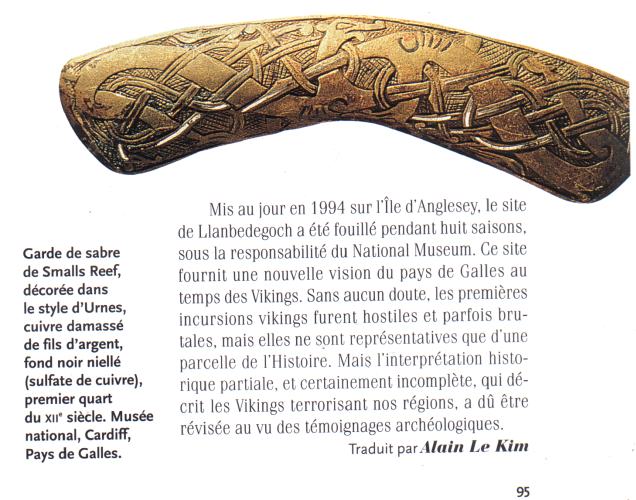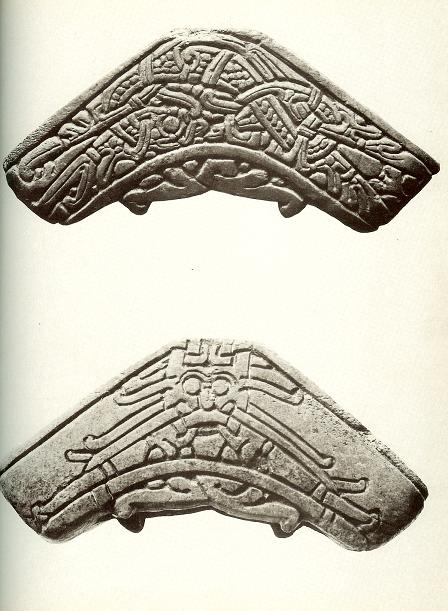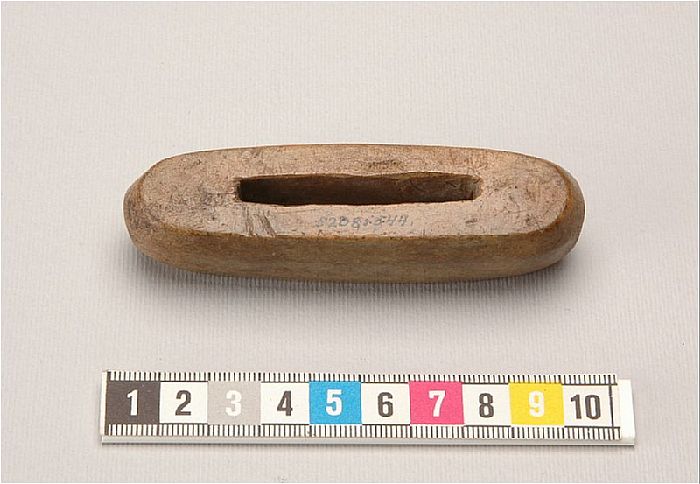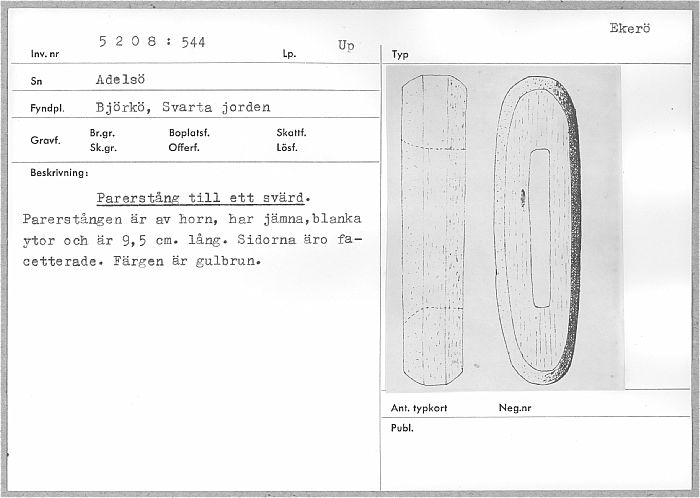I have posted the pic for those who havent see one before but I am wondering if anyone has any other pics of the other side or any drawings of the detail....or if there are any other bone cross-guards kicking around in museums anywhere as some of you have traveled a lot more than I have. Mabye Elling Polden has seen some being in Norway ?
Does anyone have any other info about these..........this example was found in Wales. Probablly no way of knowing how widspread the use of bone was, but I think I remember seeing a carved bone Viking Pommel somewhere ! I guess its reasonable to assume they would have been made in a matching set of cross guard and pommel ? Mabye the Auroch (cow) bone was particularly robust ? (Guess no-one's gonna do a DNA test to find out !)
Cheers and best wishes to all.
[ Download ]




